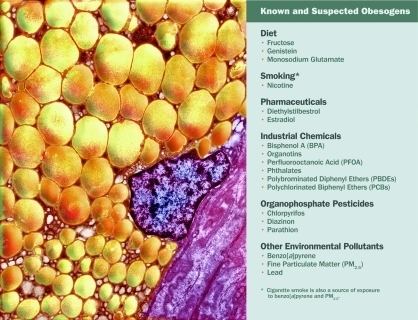That have nothing to do with calories and macros.
The disturbing effect of Obesogens and your Thrifty Genes and what you can do about it right now.
As a nutritionist and also as someone who’s struggled with fat loss since high school, there’s nothing more frustrating than doing everything “right”, and not seeing the results you expect for all your efforts.
This certainly was my story for years. And although it’s true so many of my issues were stress-hormone related (which is ultimately mindset related), I also had my fair share of environmental exposures and genetic pre-dispositions that made me even more susceptible to being overweight – or more accurately, overfat (excess adipose tissue).
My thrifty 100% Irish – Potato-Famine genes ensure that I retain more stored energy (fat) (just in case, God forbid, history repeats itself and I have to deal with starvation).
Of course, in this over-abundant food-wasting country, we are grossly overfed. Average caloric intake averages close to 2400 per day. For most middle aged, sedentary people – and even the moderately active – especially if you’re genetically predisposed – this amount of food is well beyond metabolic needs.
But what’s been happening in the modern era – with industrial agriculture, the introduction of plastics and at least 84,000 new chemicals introduced on our planet, takes the issue way beyond calories – to actual hormonal disruption at the DNA level. Our cells are being reprogrammed to store fat in an effort to deal with the onslaught of chemical exposure.
In the literature, this growing list of chemicals is called “Obesogens” because, as you might have guessed – these exposures disrupt hormones so much that they promote obesity.
The really scary thing is, this DNA alteration has been shown to be epigenetic – meaning that it’s not just effecting you. This cellular change and the compensatory pattern gets passed down to your offspring and future generations.
In the research, increasing the number or size of fat cells is designed to prevent vital organs from being exposed to them. This is a protective mechanism. Similar to the thrifty genes, the body just wants to help you survive the threats. It’s not trying to make you fat and miserable.

So if you’ve been eating within your ideal caloric range, moving your body, sleeping well, drinking water and managing your stress (for real), you may want to look at your exposure to obesogens and minimize them.
Here are 5 places to start:
- Eat Organic, Pastured, Wild foods – Especially animal products. You are what your meat eats! Animals store obesogens in their fat tissues too, so if you’re eating cheap, conventional eggs, dairy, fish and meat – especially if you’re Keto and relying more on high fat animal foods – you may be getting hit with more obesogens than you realize. This could be why Keto doesn’t “work” for some people.
- Avoid Plastics – Ditch the plastic containers, packaging, baggies, straws, cups and plastic water bottles. Watch for plastic lined containers too – especially where heat and hot water makes contact (microwave foods, coffee filters, K-cups, etc). Choose glass, stainless steel, cloth and alternative natural materials instead.
- Avoid Toxic Skincare/Beauty Products – Your skin absorbs everything you bathe, slather and brush with. Thankfully there are more and more “clean beauty” products on the market like Beauty Counter, Honest Co., Burts Bees, Dr. Haushka. You can look up your favorites in the EWG database to see if they make the cut.
- Avoid Chemical Based Household Products – Cancel your chemical lawn service! Swap out Lysol, Tide, Windex and Clorox for their “greener” counterparts. Skip Fabric Softeners all together. Do some research and use safer natural alternatives like essential oils, lemon juice, white vinegar and baking soda for cleaning.
- Avoid the top 3 obesogens found in the Standard American Diet: Soy, Fructose and MSG – These compounds have several hidden names and they proliferate the SAD diet and many common food products like mayo, sauces and spices. Read your labels and opt for eating organic real whole food whenever possible.
It’s literally impossible to avoid exposure to obesogens. The last thing I want to do is have you stress out about it (because stress is way worse for your health). BUT you can fairly easily start to make some swaps in your diet and day to day in order to minimize your exposure. You may have already started (if so, please share your best tips below). If this is all new to you, start swapping things out with your next purchase. And please let me know how and what you do.





